In recent years, with the rise of 5G communication and artificial intelligence, FPGAs have been used in a wider range of applications, and Chuangxin online testing lab often receives samples for testing in this area. After carrying out several cases, we found that if customers can carry out functional tests on FPGAs before they are put on the machine, and confirm whether the status is normal in advance, then the tedious troubleshooting work can be greatly reduced at a later stage.
FPGA (Field-Programmable Gate Array) full name Field Programmable Gate Array, as the name suggests, it is a programmable logic device, with a large number of programmable logic blocks and reconfigurable connectivity resources, allowing the designer to implement customized digital circuits at the hardware level without the need to customize a dedicated processor for different applications. This extreme flexibility has led to the widespread use of FPGAs in a number of fields, including but not limited to:
Telecommunications and Communications | For protocol conversion, signal processing and network acceleration |
| Embedded systems | For control and data processing, e.g. automotive electronics, industrial automation and embedded computers |
| Image and Video Processing | For real-time image processing, computer vision and video codecs |
| Scientific and medical | For scientific computing, medical imaging and laboratory equipment |
| Encryption and security | Encryption and security |
FPGAs play a key role in the aforementioned fields, and the stability and reliability of their functions are critical to the overall smooth operation of the system. Therefore, before actually using FPGA, it is necessary for us to do a simple function test on it to ensure that it functions properly. If the system fails to operate and the FPGA is not tested in the early stage, it will make troubleshooting more difficult and cause additional time cost.
FPGAs can be tested and configured using a variety of modes. The following are some common modes used to test and configure FPGAs:
JTAG Mode (Joint Test Action Group Mode): JTAG is a standard interface and protocol used to test and configure integrated circuits.FPGAs typically have a JTAG interface through which they can be tested, debugged, and configured.JTAG also allows for dynamic reconfiguration of the FPGA at runtime.
AS (Active Serial) Mode: This is a mode used to configure the FPGA through a serial interface. Typically, configuration data is sent to the FPGA via SPI (Serial Peripheral Interface) or a similar serial communication interface.
Slave Serial Mode: In this mode, the FPGA receives configuration data from an external device through the serial interface. This mode usually involves using an external device (such as a microprocessor or FPGA) as the configuration master.
Passive Serial Mode: In this mode, the FPGA receives configuration data through a set of parallel lines (usually called TCK, TDI, TMS, and TDO on one of the JTAG pins). Unlike Active Serial mode, here the data is transferred through a parallel interface.
ICAP (Internal Configuration Access Port) Mode: ICAP is a mode that allows the FPGA to receive configuration information at runtime. This allows dynamic partial reconfiguration while the FPGA is running.
PS Configuration Mode (Processor System Configuration Mode): Some FPGAs have an integrated processor system, and the PS configuration mode allows the FPGA to be configured through a dedicated processor system configuration interface.
The choice of configuration and test modes usually depends on the specific application needs, as well as development and debugging requirements. In this case, the JTAG mode is a generic interface widely used for testing, debugging and configuration, while the other modes will be more suitable for specific application scenarios. This time, our case study will start with JTAG mode.
In order to better respond to the needs of our customers and ensure efficient test work, Chuangxin Online Testing has independently developed a variety of FPGA test development boards. We will use the following development boards to test the basic functions of FPGAs in JTAG configuration mode.
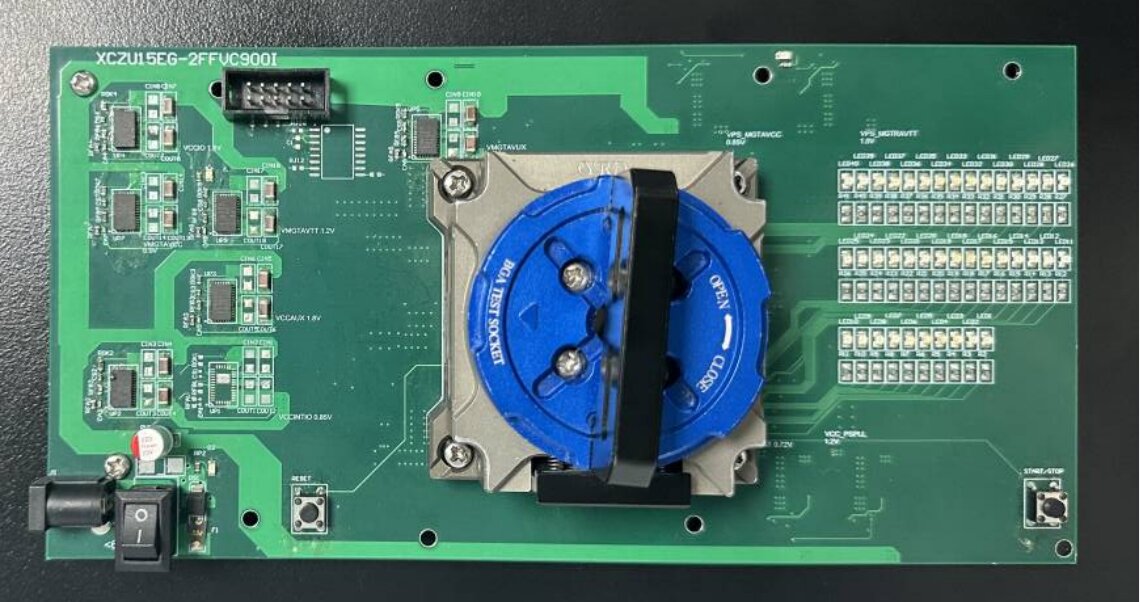
FPGA test case sharing of Chuangxin Online Testing
Based on XC3S2000-4FGG676I (belonging to Xilinx Spartan-3 series)
Ⅰ. Open the computer ISE Design Suite 14.7 software, click to open the "iMPACT". ISE Design Suite is the official development suite of Xilinx, with which we can see the current status of the FPGA, and carry out a variety of tests, including the import of programming and other work.
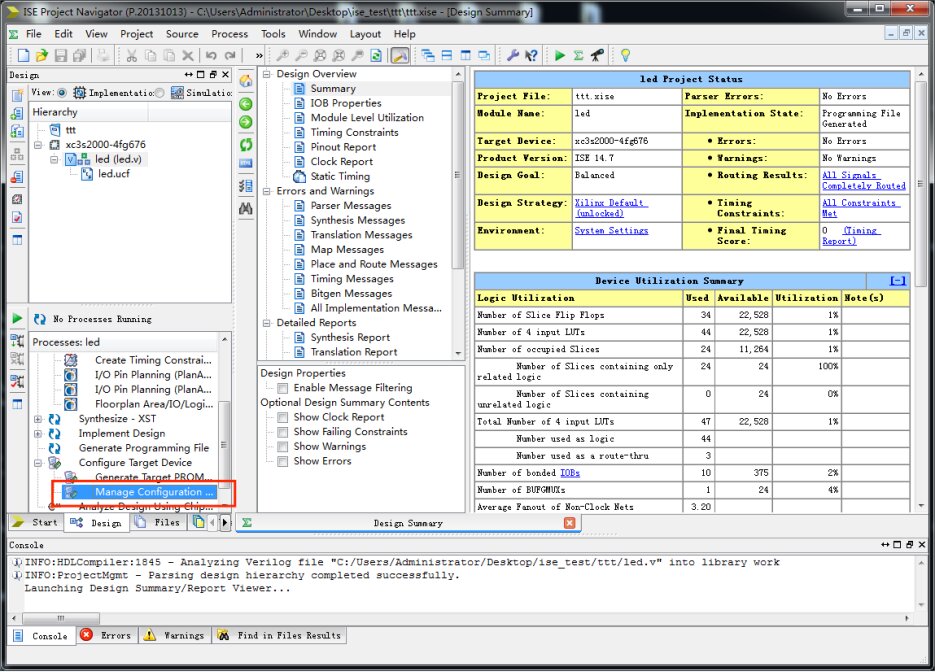
Ⅱ. Connect the test board, computer and burner, and click Identify Device in the ISE Design Suite interface.
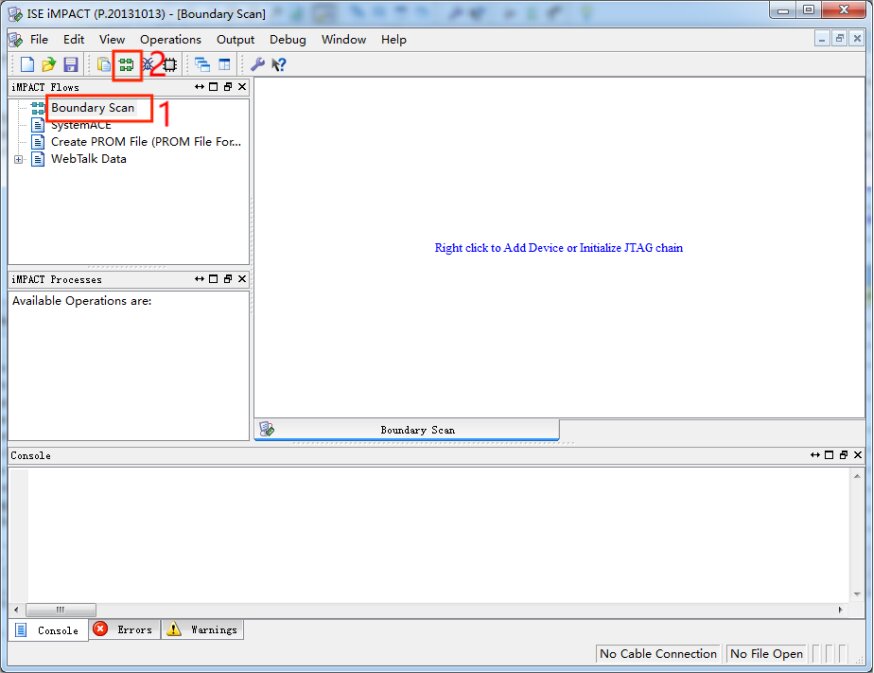
Ⅲ. Successfully to identify the device, we import the test file, click programming. As shown in the figure, the JTAG circuit is normal, programming test success.
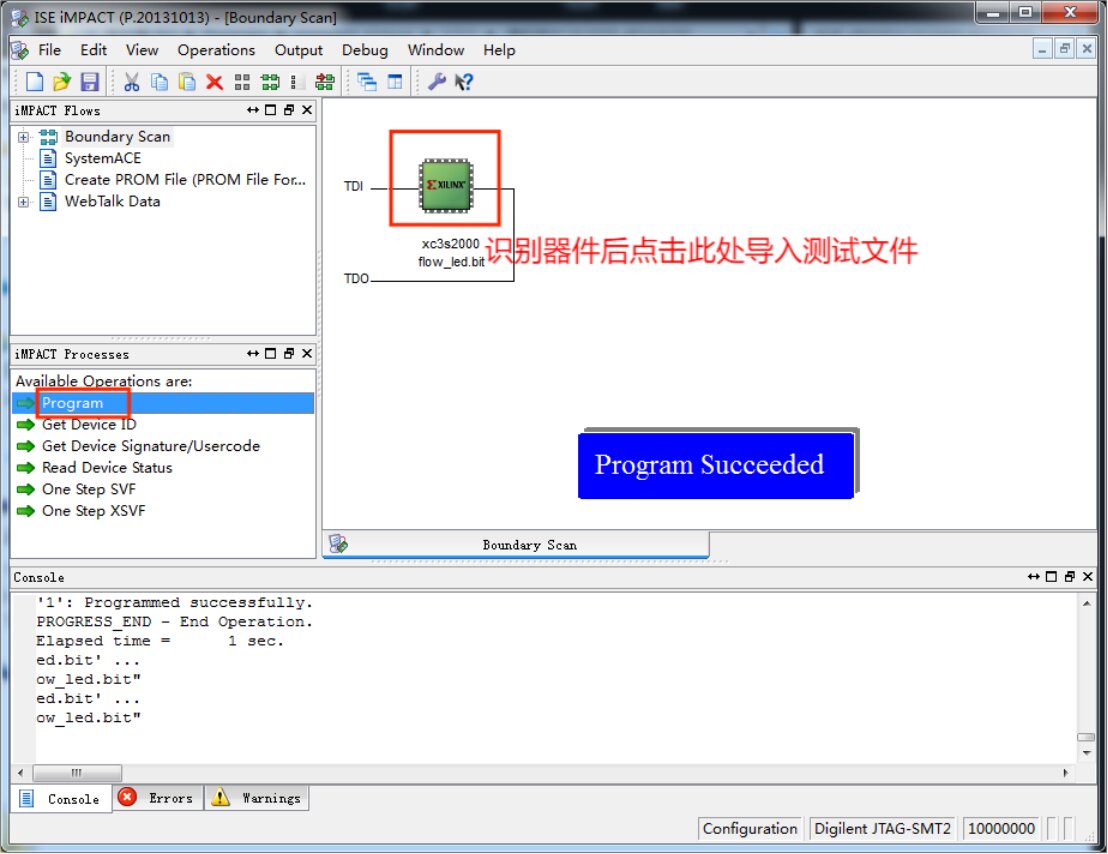
Ⅳ. Get the device ID success.
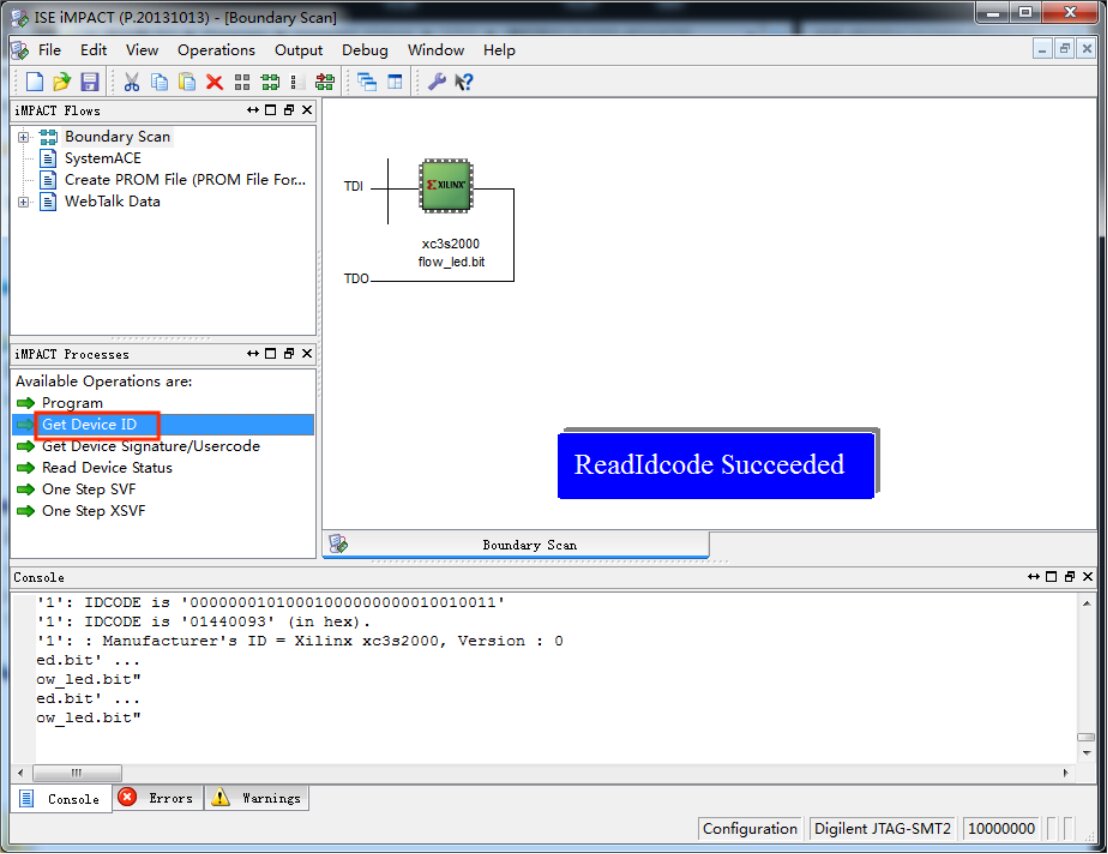
Ⅴ. Get the device user code success.
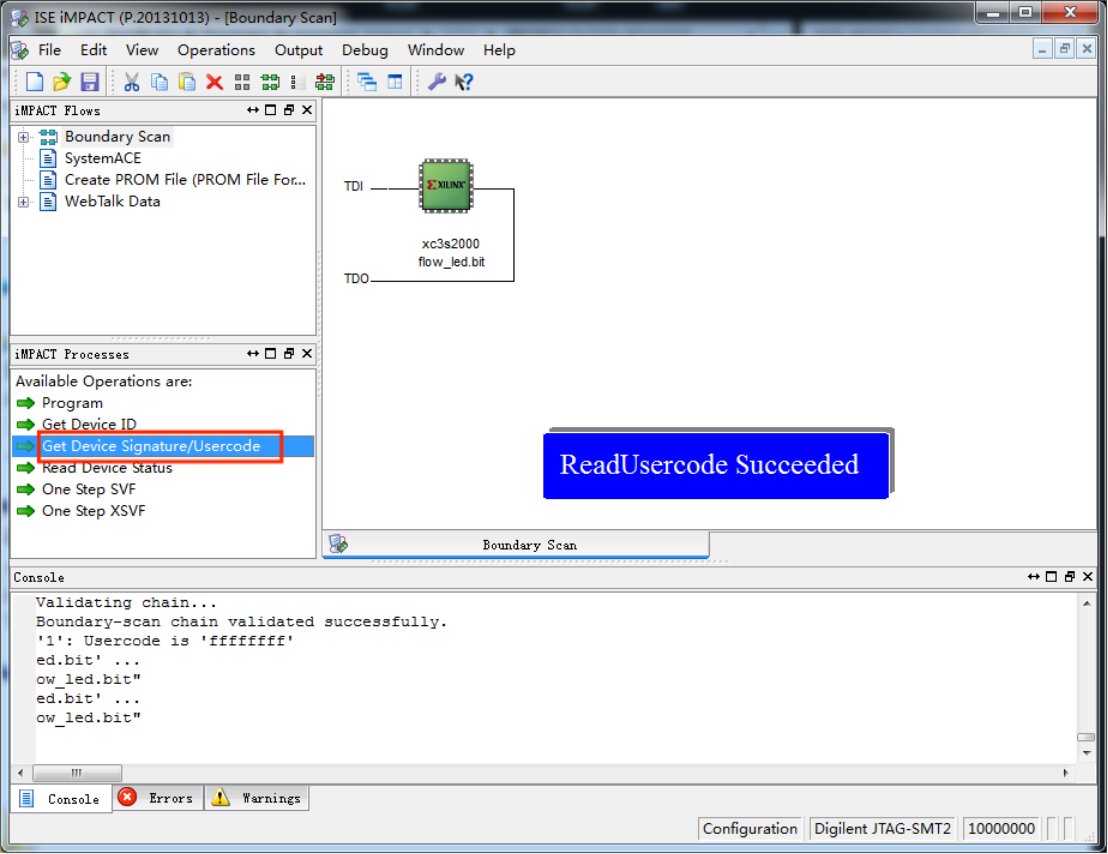
Ⅵ. Read the device status successfully.
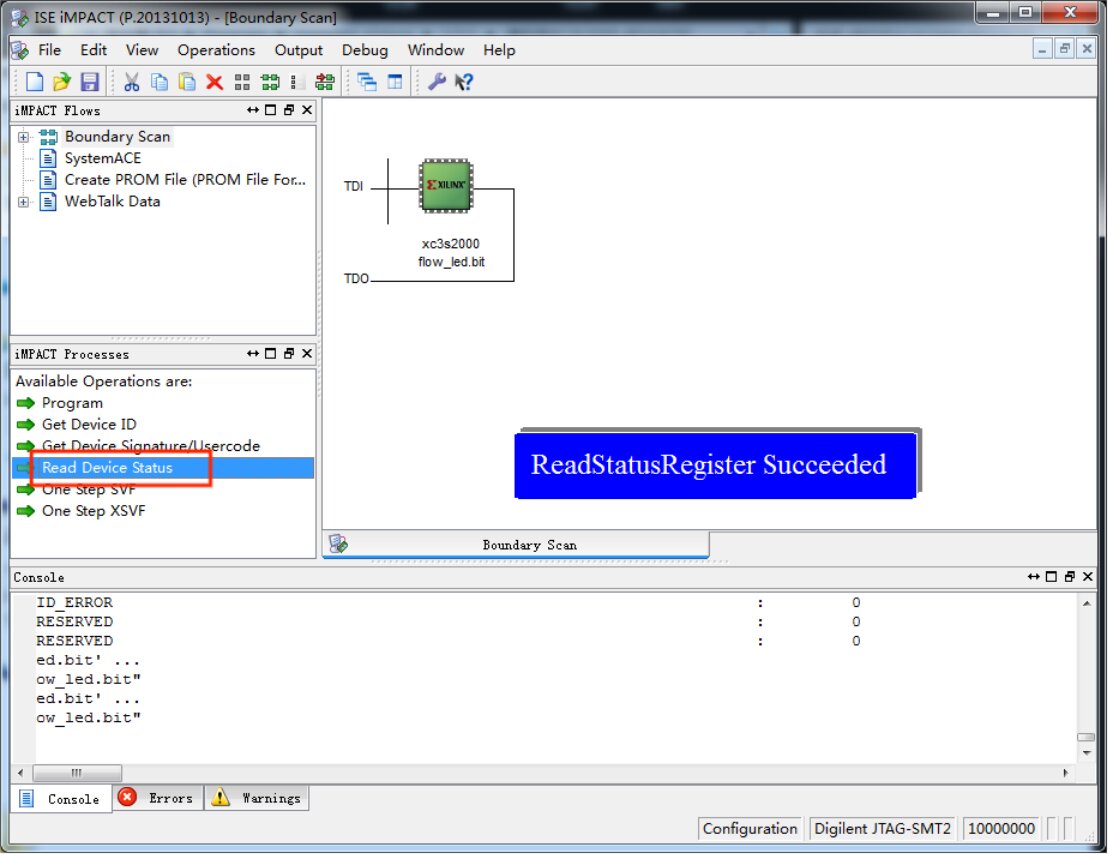
Comprehensive conclusion of the above steps, this FPGA can be normal programming, device ID, user code and other key information can be obtained, the device status can also be read, which proves that the FPGA is functional and available. In the next practical application, if the system has problems, it can be ruled out that it is caused by this FPGA.
Functional testing of the chip can effectively improve the overall reliability of the system, and professional testing can eliminate failures before application.
The article is copied from our cooperative test labs, visit our website if you are interested: perceptive-ic.com!



























